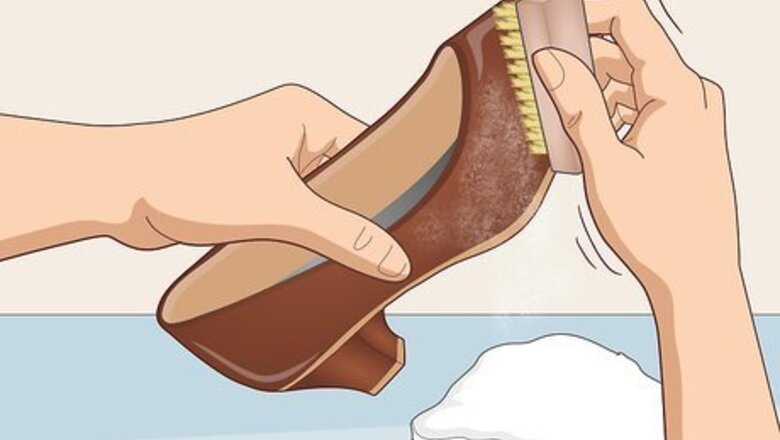
views
Fixing Minor Scratches
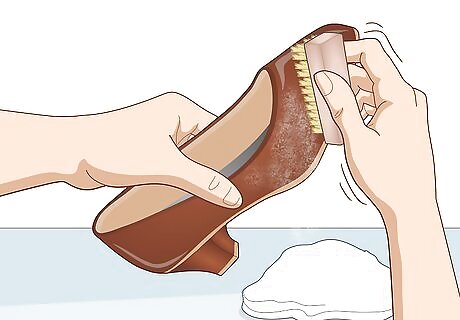
Clean the shoe using a damp cloth or shoe brush. Dampen a clean cloth and use it to wipe down the leather shoe’s surface. Leather that's untreated can be damaged by water, so if you're not sure whether your shoes are treated or not, use a horsehair brush made for buffing shoes to remove any dirt or dust before you start fixing the shoe. Let the shoe dry completely before repairing it if you used a damp cloth to wipe it down.
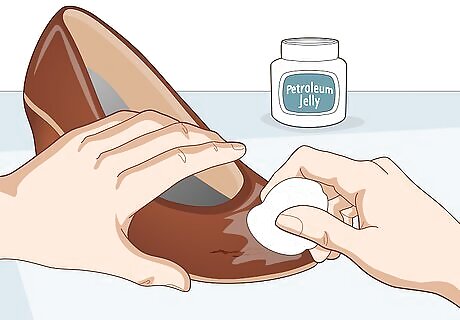
Rub petroleum jelly on the leather to fill in a scratch easily. Dip a clean cloth in petroleum jelly and use circular motions to rub it into the scratch. Wait 10 minutes before wiping the excess petroleum jelly off using a clean rag. The jelly should fill in the light scratch so it’s not visible anymore. Avoid using petroleum jelly that’s colored or scented.
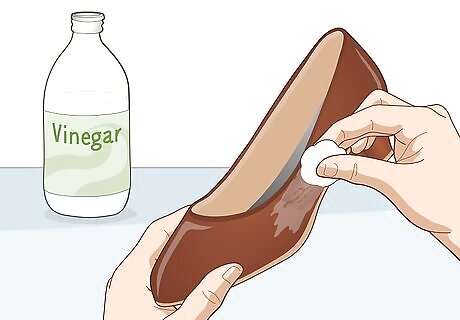
Apply white vinegar to the leather to disguise a small scratch. Dip a cotton ball or clean cloth in white vinegar. Dab the white vinegar on the scratch—this will cause the leather to swell, disguising the scratch so it’s no longer visible. Apply a shoe polish to your leather shoes after using the vinegar, if possible, to keep your shoes looking shiny.
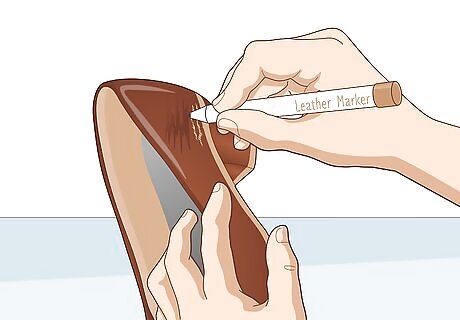
Use a leather marker or recoloring balm to fill in a light-colored scratch. If the scratch on your leather shoe stands out against the rest of your shoe’s color, find a leather marker that’s the same color as your shoe and use this to fill in the scratch. Instead of a leather marker, you can also use recoloring balm, which is colored shoe polish that’s available in many different colors. Match the leather shoe’s color to the leather marker or recoloring balm as closely as possible to ensure your scratch isn’t visible. Use a clean rag to apply recoloring balm to the leather.

Heat the leather using a hair dryer to fix a scratch using swelling. Once the leather swells, the scratch will disappear. Aim a hair dryer set to medium heat on the scratch and wait for the leather to warm up a bit before using your fingers to massage the scratched area of leather. If you’re aiming the hair dryer at your hands and it’s too hot, then the hair dryer is too hot for the leather as well.
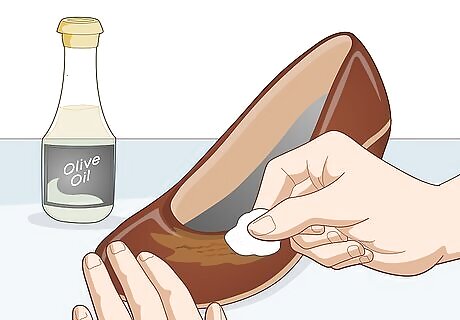
Apply olive oil to your shoes to repair very shallow scratches. Sometimes all you have to do is dab a little olive oil on the scratch to make it disappear. Dip a cotton ball or paper towel in the olive oil and dab the oil into the scratch carefully. Wipe away any excess oil using a clean rag or paper towel.
Repairing Deeper Scratches

Remove loose leather using sandpaper or small scissors. Deep scratches tend to leave pieces of leather sticking out from the shoe’s surface. To remove these pieces, use a fine grit sandpaper to gently rub off the extra leather, creating a smooth surface. Alternatively, snip the extra leather off using tiny scissors. If you use sandpaper, be sure not to rub too aggressively so you don’t mess up the leather. Use 120- to 220-grit sandpaper.
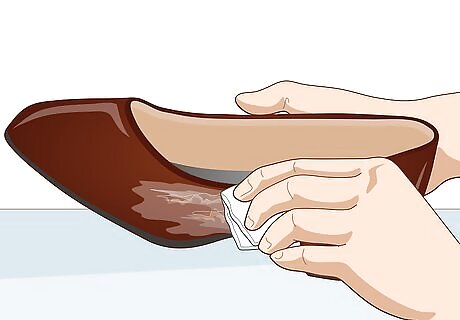
Clean the shoes using a shoe brush or damp cloth. It’s important to remove any dust or dirt before you fill in the scratch. Wipe the leather shoe down using a damp cloth or use back and forth strokes to clean the shoe using a shoe brush. Let the shoes dry if you used a damp cloth on them before filling in the scratch. Pay extra attention to the spot where you’ll be filling in the scratch when you’re cleaning the shoe.
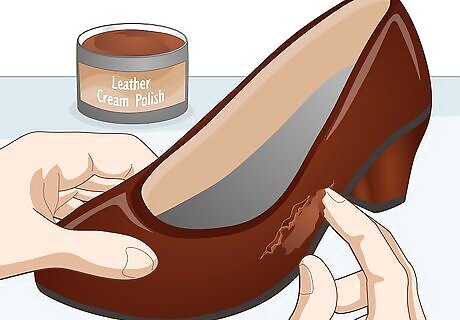
Fill in the scratch using a leather cream polish that matches the shoe. Leather cream polishes come in many different shades, so select one that most closely resembles the color of your leather shoes. To test the color out, dab a small amount on the shoe and rub it in, seeing if the color blends in with the rest of the shoe. Look for a leather cream polish at a specialty shoe store or online.
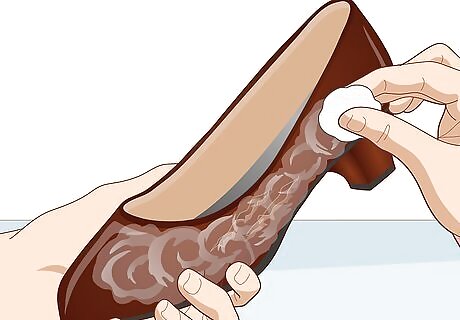
Rub the cream polish into the scratch and whole shoe using circular motions. Once you’ve determined the right color for your leather, dip a clean cloth into the cream and apply it to the scratch. Rub it into the scratch using small circular motions. Apply the cream polish to the rest of the shoe as well to be sure the color blends in well. Rub the cream polish into the shoe gently to avoid causing damage.
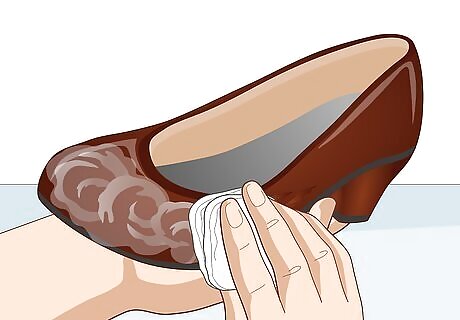
Wipe away excess cream evenly and let the shoe dry. Once you’ve filled in the scratch, wipe away the excess cream polish using the rag. Let the cream polish dry completely before using the shoes or adding another coat. Consider buffing the shoe with a horsehair brush after the polish dries for a final sheen.
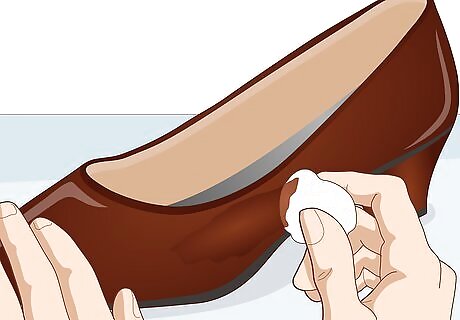
Apply additional coats of the cream polish if needed. If the scratch isn’t fully filled in yet, apply a second layer of the cream polish to the scratch. Use circular motions and remember to apply the cream to the entire surface so it blends in well. To be sure your leather shoes match, apply the colored cream polish to both shoes, even if only one of them had a scratch.

















Comments
0 comment